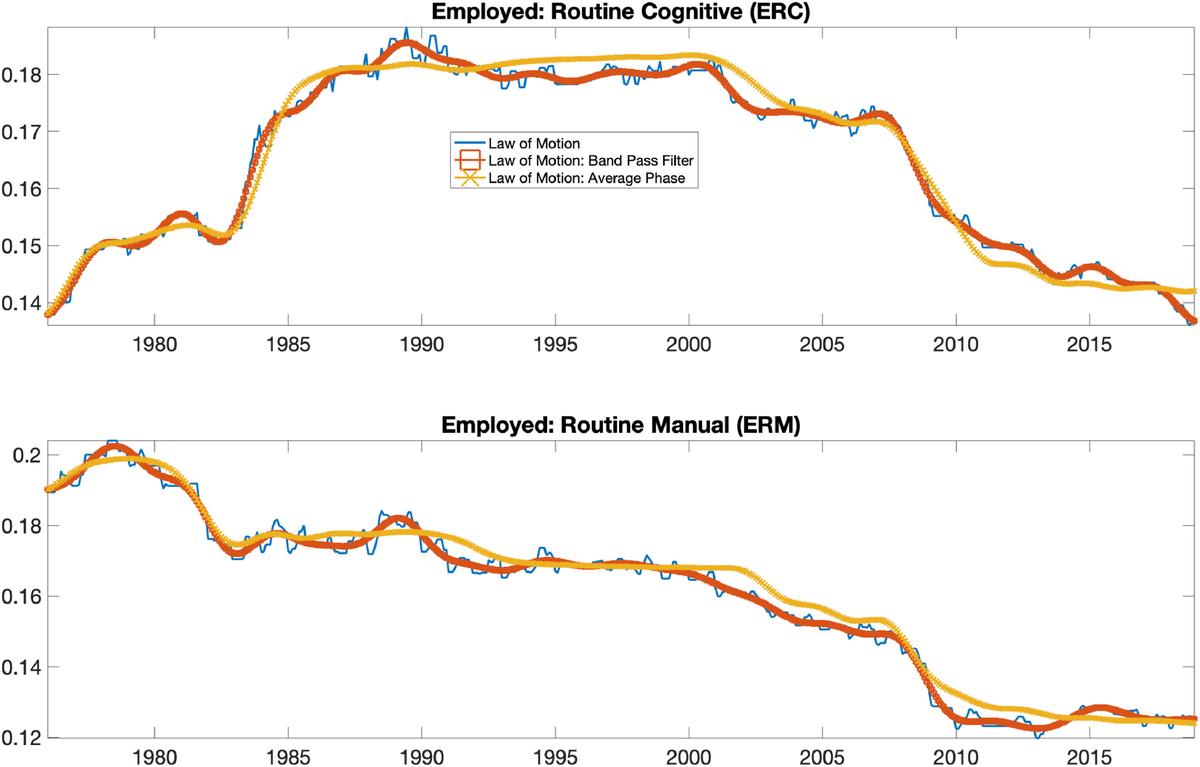The Dynamics of Disappearing Routine Jobs: A Flows Approach
 Routine employment based on law of motion using monthly rates and phase averages
Routine employment based on law of motion using monthly rates and phase averages
Abstract
We use matched individual-level CPS data to study the decline in middle-wage routine occupations during the last 40 years, and determine how the associated labor market flows have evolved. The decline in employment in these occupations can be primarily accounted for by changes in transition rates from non-participation and unemployment to routine employment. We study how these transition rates have changed since the mid-1970s, and find that changes are primarily due to the propensity of individuals to make such transitions, whereas relatively little is due to demographic changes. We also find that changes in the propensity to transition into routine occupations account for a substantial proportion of the rise in non-participation observed in the U.S. in recent decades.
- Read our summary of the paper in VoxEU (2014-10-02)
Media coverage
- 2014-07-29 – FiveThirtyEight
- 2014-07-25 – The Washington Center for Equitable Growth
- 2014-07-23 – engadget
- 2014-07-22 – New York Times
Other versions
- July 2014 – “The Micro and Macro of Disappearing Routine Jobs: A Flows Approach,” NBER Working Paper 20307 (2.32 MB PDF)